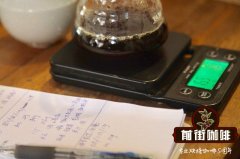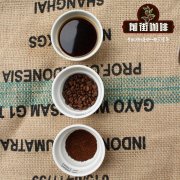Do you grow coffee in Laos? What are the main varieties of coffee grown in Laos? Characteristics of Laos Coffee

Professional coffee knowledge exchange more coffee bean information please follow the coffee workshop (Wechat official account cafe_style)
Coffee Story in Laos
In Laos, coffee is grown almost entirely on the Brawan plateau of Bassai province in the south of the country; there is ample rainfall, cool temperatures and rich volcanic soil, more than 1300 meters above sea level, reaching 15 degrees latitude, there are perfect conditions for growing world-class coffee. Arabica coffee beans grown from the plateau are medium-bodied and combine aromas with citrus and floral aromas.
The communities that grow coffee in Laos include about 20,000 peasant families, 250 villages and several larger growing companies. Many minority communities and most peasant families earn their income from the harvest of coffee.
In 1915, France first planted coffee trees from Laos (a former French colony), but failed. In another coffee plant in 1917, Arabica and Robusta coffee trees were planted from the botanical garden in Saigon and a village in the northern part of his plateau, but failed again due to lack of care.
France finally succeeded in planting coffee trees in Laos in 1930, with an annual coffee harvest of 5000 tons. Twenty years later, most of the coffee trees on the plateau died of Frosts Descent and orange rust. Annual production fell to less than 1500 tons, so farmers began to plant disease-resistant robusta coffee trees to replace most Arabica bushes.
After the resumption of coffee production, but then as a result of the war, annual production fell again from 7000 tons to 3000 tons. With the end of the war and the relocation of many families, productivity on the plateau soared and coffee production resumed.
At present, the annual output of coffee in Laos is about 15-20000 tons, of which 80% is Robusta. Over the past 20 years, development agencies and the Lao Government have encouraged farmers to grow Arabica coffee trees on the plateau because their prices are about twice that of Robusta; as a result of this efforts, farmers' incomes have gradually increased.
Coffee is Laos's fifth largest export. The Boloven Plateau (Bolaven Plateau), located in the south, is the largest coffee growing area in the country, where about 95 per cent of Lao coffee is produced. The planting area is located at 15 degrees north latitude, from 600 to 1300 meters above sea level, covering an area of more than 500square kilometers, with abundant sunshine and Rain Water, cool temperature and slightly acidic fertile volcanic soil, which is a very good planting condition and has the potential to produce a large number of high-quality Arabica beans. Laos coffee is mellow with mild citrus and floral aromas.
END
Important Notice :
前街咖啡 FrontStreet Coffee has moved to new addredd:
FrontStreet Coffee Address: 315,Donghua East Road,GuangZhou
Tel:020 38364473
- Prev

What are the characteristics of Pacamara coffee? How should kalita three-hole triangular filter cup be used?
Professional coffee knowledge exchange more coffee bean information please follow the coffee workshop (Wechat official account cafe_style) Pacamara Pacamara is a hybrid gene of Pacas Pacas and elephant bean Maragogype, so it has a huge tall tree shape and large raw beans, compared with other Arabica and Robsta (tied with Arabica as the main supply for humans
- Next

According to the type of coffee, the mixed coffee will have different characteristics in taste.
According to the type of coffee, the mixed coffee will have different characteristics in taste. (1) Comprehensive coffee formula with balanced taste: Guatemala SHB (30%), Mexico AL (30%), Brazil NO.2?19 (20%), Kilimanjaro AA (10%). The top comprehensive coffee is the best combination of sour, bitter and aroma, which is to mix these beans together.
Related
- Guji coffee producing area of Guji, Ethiopia: Humbela, Shakiso, Wulaga
- What is the most expensive variety of Qiloso in BOP multi-variety group?
- How to store the coffee beans bought home?
- Why are Yemeni coffee beans so rare now?
- Ethiopian Sidamo all Red Fruit Sun Sun Santa Vini Coffee beans
- SOE is mostly sour? What does it mean? Is it a single bean? what's the difference between it and Italian blending?
- Is Italian coffee beans suitable for making hand-brewed coffee?
- How to choose coffee beans when making cold coffee? What kind of coffee beans are suitable for making cold coffee?
- Just entered the pit to make coffee, what kind of coffee beans should be chosen?
- Can only Japan buy real Blue Mountain Coffee? What are authentic Jamaican Blue Mountain coffee beans?

